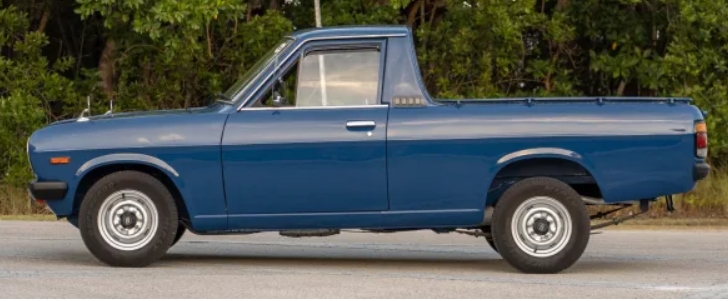The Evolution of the Mercury Marquis: A Comprehensive Overview
The Mercury Marquis holds a noteworthy position in the history of American automobiles, representing a blend of luxury and functionality. Produced from 1970 to 1992, the Marquis evolved through several generations, each significantly influenced by changing consumer preferences and automotive trends.
Introduction to the Mercury Marquis
The Mercury Marquis was introduced in 1970 as a full-size automobile, positioned above the Mercury Montclair and below the Mercury Grand Marquis. It was originally designed to compete with other offerings from General Motors, Ford, and Chrysler, capturing the market segment looking for luxury features at a relatively affordable price point.
First Generation (1970-1977)
The Mercury Marquis made its debut in the 1970 model year, and its first generation continued until 1977. This iteration was developed on the Ford Panther platform and featured a body-on-frame construction typical of full-size cars of that era.
- 1970-1971: The Marquis was available as a two-door hardtop and a four-door sedan. Key features included plush interiors with vinyl upholstery, power windows, and air conditioning as optional or standard equipment on higher trims.
- 1972: Midway through its first generation, the Marquis received a redesign that included new fascia and taillights. It was available in base and Brougham trim levels, the latter offering more luxurious features such as premium upholstery and additional chrome detailing.
- 1973-1977: The years that followed brought little alteration in design but integrated safety features aligned with federal regulations, including larger bumpers. The Marquis maintained its full-size stature, but increasingly became a plush cruiser. Notably, the 1975 model year introduced the Marquis as its own standalone model; prior to this, it had shared branding with other Mercury models.
Second Generation (1978-1982)
In 1978, the Mercury Marquis underwent a significant redesign, embracing a more aerodynamic shape that was in line with the industry’s shift toward fuel efficiency during an era marked by oil crises.
- 1978-1980: Offered as a four-door sedan and two-door coupe, the second-generation Marquis was marketed as a substantial full-size vehicle. Interior updates included sound-deadening materials and ergonomic seating arrangements. The Marquis was offered in the base model and the Brougham trim.
- 1981-1982: The Marquis Brougham became the more popular option, featuring plush leather seating, more extensive standard features, and additional options such as a digital clock and enhanced audio systems.
.
NO MORE dead batteries with this:

.
Third Generation (1983-1986)
The third generation of the Mercury Marquis debuted in 1983, relying on the Fox platform, which marked a shift to a smaller full-size vehicle.
- 1983-1984: Again, the model was available as a four-door and two-door car. Its design was modern for the time, showcasing boxy lines characteristic of the era, with upgraded handling and performance compared to its predecessors. The Marquis gained a reputation for reliability while keeping comfort at the forefront.
- 1985-1986: The Marquis underwent minimal changes but was characterized by further refinement in features such as climate control systems and improved insulation. The Marquis was still offered in standard and Brougham trim, with the Brougham offering more luxury features like advanced sound systems and optional fuel-injected engines.
Fourth Generation (1987-1992)
The final generation of the Mercury Marquis began in 1987, showcasing a definitive shift towards modern sedans with a focus on luxury and comfort.
- 1987-1991: This generation featured a more rounded, aerodynamic profile that helped improve fuel efficiency and overall performance. As with previous generations, the Marquis was offered in both four-door and two-door models. The base model was equipped with standard amenities, while the Marquis LS and later the Marquis GS added more luxury touches, including leather interiors and plush seat coverings.
- 1992: The Marquis received its last refresh before the model was discontinued. The 1992 version came equipped with driver-side airbags, anti-lock brakes, and an upgraded sound system. However, sales began to decline, reflecting the wider industry’s shift towards smaller vehicles amid changing consumer preferences.
Trim Levels Overview
Throughout its production run, the Mercury Marquis offered various trim levels that aimed to provide a mix of luxury and functionality:
- Base Model: This trim level offered the essentials, making it a practical choice for families seeking a full-size car without the frills.
- Brougham Trims: From the early ’70s through to the end of production, the Brougham trim stood out by incorporating upscale features like upgraded interior materials, advanced audio systems, and exterior chrome accents.
- GS and LS Trims (1987-1992): As the vehicle transitioned into its final generation, the addition of GS and LS trims introduced a more luxurious experience, with standard leather seating and more advanced technology.
Market Impact
The Mercury Marquis played a pivotal role in shaping Mercury’s identity in the American automotive landscape. While it had its peaks in popularity during the 1970s and early 1980s, competition from foreign automakers and changing consumer tastes began to erode its market share. Despite its loyal customer base, the Mercury brand faced challenges that led to its eventual discontinuation in 2010. The last Marquis rolled off the assembly line in 1992, marking the end of an era for this storied model.
Conclusion
The Mercury Marquis can be seen as a reflection of the changing times in the American automobile market. From its luxurious beginnings in the 1970s through various redesigns into the 1990s, it balanced traditional American automotive values with modernization. While the model is no longer in production, its legacy lives on in the minds of those who appreciated its comfort and class. The Mercury Marquis remains a symbol of an era when American full-size sedans ruled the roads, offering both luxury and practicality.







